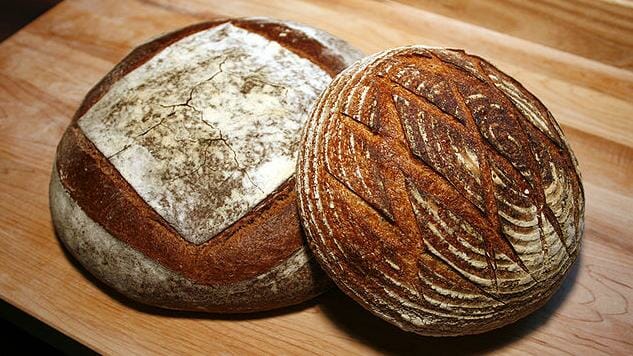Wild Culture: A History of Sourdough

If you’ve ever bitten into a slice of true sourdough bread, you know that it can’t be beat. Good things take time, and baking sourdough bread is a long process, proof to the love and passion of the baker, who knows that patience will pay off. It is one of the ultimate slow foods, the antithesis of bright white breads filled with preservatives. A freshly baked loaf of sourdough is a beautiful thing, its crust holding a story of the symbiotic relationship of yeast and bacteria that has been taking place for centuries.
As Julia Child once said, “How can a nation be called great if its bread tastes like kleenex?” After decades of industrialized, cheap, white and unflavorful bread, we are finally coming back around to taste and embracing the art of sourdough (through wild culture we develop actual culture?). But while sourdough might be having a bit of revival, it’s anything but new.
The tangy bread is the oldest form of naturally leavened bread, dating back to the ancient Egyptians. Take a look at the components of sourdough bread, and this long history is no surprise. Like wine and beer (which also date back centuries), the making of sourdough is a natural – one could say, inevitable – process, one that relies on wild yeast, something that exists all around us. Let a bowl of flour and water sit for a few days, and the natural process of fermentation begins, thanks to the wild yeasts (Saccharomyces) and different bacteria species (Lactobacilli).
In the United States, we have our own particular sourdough history. Fast forward from Ancient Egyptian times a few thousand years to the American West, and you will find some of the foods that many of us associate with sourdough, like sourdough pancakes and sourdough biscuits.
Sourdough was a popular staple with the pioneers, who carried their sourdough with them, an easy way to kick start flour recipes when other leavening agents (like yeast cakes) weren’t available in the untouched landscape of the West, where groceries were but a long lost memory. But if you had flour and water then you could make a bread rise (pioneers would also often use potatoes and potato water for their starter). Beyond the usefulness of sourdough starter, it also added flavor, as well as ensured nutrition, which was essential in an era of hardships. You know what I’m talking about; we all played Oregon Trail back in the ‘90s and got cholera.
-

-

-

-

-

-

-

-

-

-

-

-

-

-

-

-

-

-

-

-

-

-

-

-

-

-

-

-

-

-

-

-

-

-

-

-

-

-

-

-









































